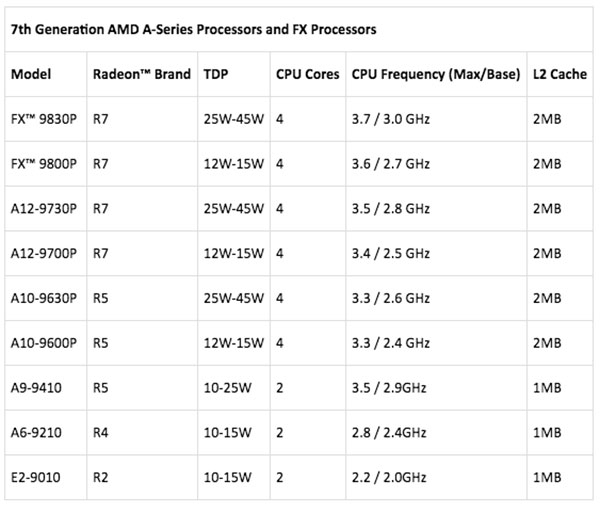Looks like we still need to wait a little bit until AMD is ready unveil the next generation high-performance CPU codename Zen. It’s a been a long wait but AMD is still not ready to give us much information at the Computex 2016. Instead, AMD has unveiled the next generation mobile platform codenamed Stoney Ridge and Bristol Ridge.

While the Stoney Ridge is target for the entry level notebooks, the Bristol Ridge is meant for the mainstream devices. As the CPU core is still based on the Excavator core, we should expect the APU to perform quite similar to its predecessor, the Carizzo. Despite the same design, AMD has improved the Excavator core, however, to support DDR4 memory and improve the power efficiency of the processor (something that is always critical for mobile devices). As a result, the new APU should deliver higher efficiency and performance. In addition, there is a new adaptive voltage frequency scaling (AVFS) integrated into the core that allows the APU to achieve higher frequency at the same thermal design.
The APUs will come with either dual or quad CPU-cores. The Stoney Bridge will be 15-watt TDP with A9, A6, and E2 configuration. The mainstream Bristol Ridge will consists of either 15W and 35W version with FX, A12, A10 configuration. While the Stoney Ridge will support DDR4 up to 2133MHz single channel, the Bristol Ridge is capable of DDR4-2400 in dual-channel mode. The graphics on the APU largely stayed the same as it is still based on the GCN 1.2 (same as Carizzo) with support for HDMI 2.0, PCIe 3.0 and will feature upgraded video decoder and codec engine such as VP9 and HEVC.
AMD’s own test shows that the top of the line, the FX 9800P, consumes up to to 12% less power than the previous generation FX-8800P. In addition, AMD’S own benchmarks shows that the the latest APU delivers up to 53% higher graphics performance and up to 51% higher computer performance against the Intel Core i7-6500U.
Source: AMD
 Bjorn3D.com Bjorn3d.com – Satisfying Your Daily Tech Cravings Since 1996
Bjorn3D.com Bjorn3d.com – Satisfying Your Daily Tech Cravings Since 1996







